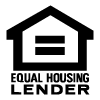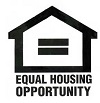A “conventional mortgage” simply refers to any mortgage loan that is not insured or guaranteed by the federal government.
Conventional mortgage loans can be both fixed mortgages or adjustable-rate mortgages.
Additionally, these types of loans may be conforming or non-conforming, with the former meeting the standards set forth by government-sponsored entities Fannie Mae and Freddie Mac.
One major factor that determines whether a mortgage is conforming or not is loan amount – loans over the conforming loan limit are considered jumbo mortgages and will come with a higher mortgage rate as a result.
Conventional mortgages typically have higher down payment and credit score requirements than government loans, and if the loan-to-value ratio exceeds 80 percent on a conventional loan, private mortgage insurance is required by the mortgage lender.
However, conventional mortgages provide more flexibility because they may kept on the original lender’s books, meaning they can set their own underwriting guidelines and risk appetite.
Government Loans
Mortgage loans that are backed by the federal government are referred to as “government loans.”
The most popular of the government loans is the FHA loan, which is a mortgage backed by the Federal Housing Administration (FHA).
FHA loans allow down payments as low as 3.5 percent, but mortgage insurance is also required.
Another common government loan is the VA loan, backed by the Department of Veteran Affairs.
Additionally, the USDA home loan program provides 100 percent financing on purchase mortgages.
Most mortgage lenders originate both conventional mortgage loans and government loans, though the government-share has increased markedly since the mortgage crisis got underway.
In fact, many suggest that FHA lending essentially replaced subprime lending, though during the boom, it was the opposite.




